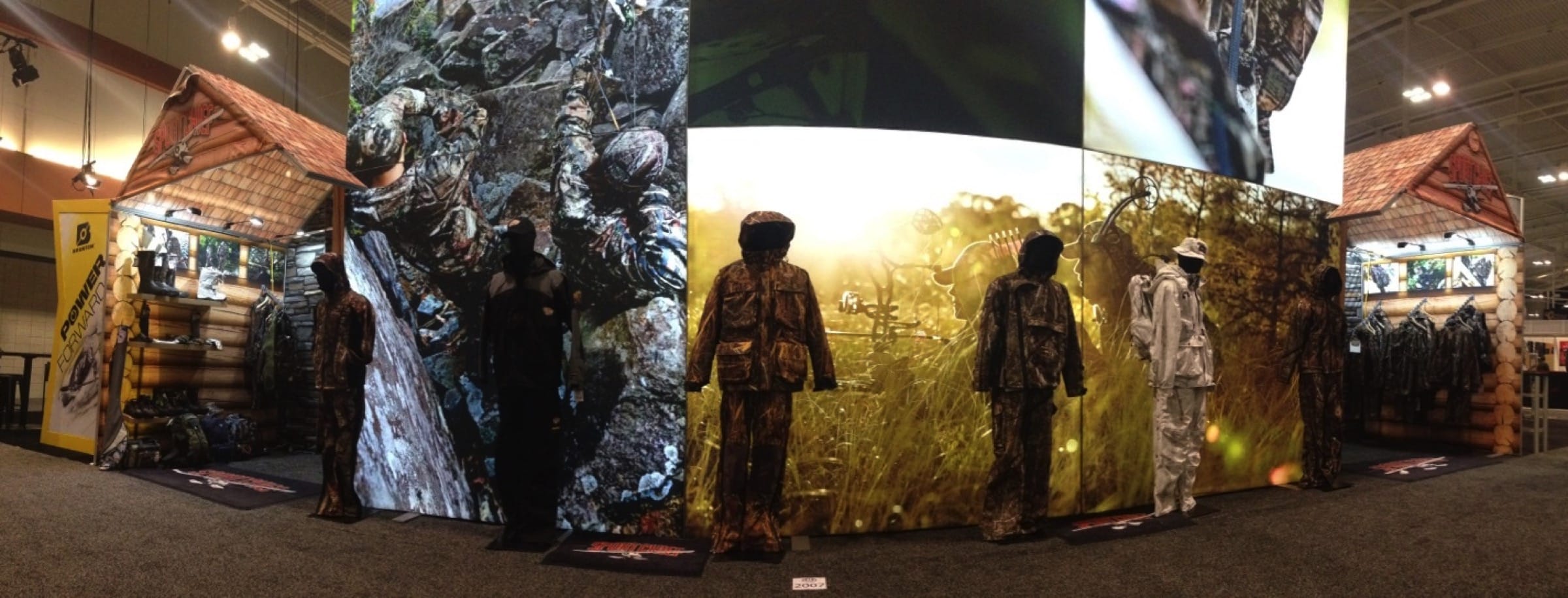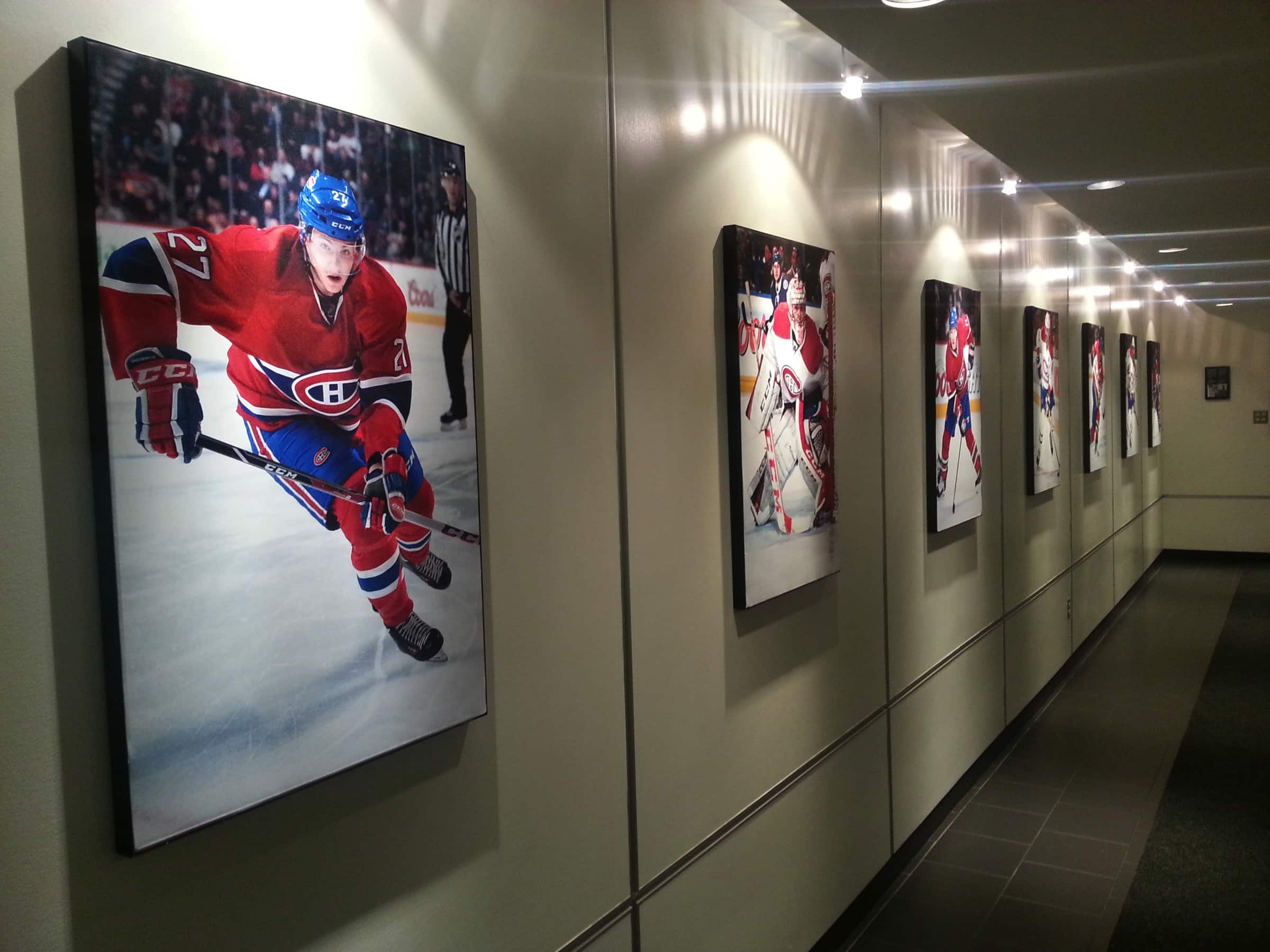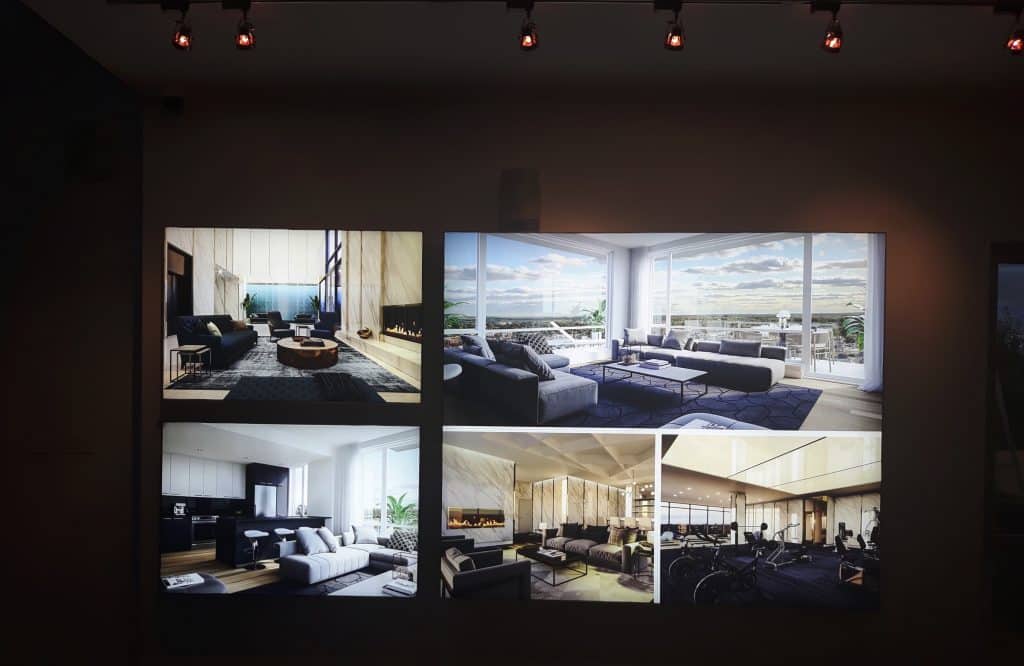Finding colors that go together perfectly is often complicated. However, this step is very important for any project, because in addition to having a crucial role in the communication objective, they are partly the ones that will contribute to the graphic success of the printed production, regardless of the medium, the size, the physical environment.
This is how the color reference charts were created. Everyone is familiar with paint palettes: Benjamin Moore, Sico, Bétonel or other charters. There are also the charts for painting baked on metal, namely the RAL color system. Even more elaborate and numerous are the charts intended for printing inks or graphic design: the famous palettes of the Pantone company, known worldwide.
There are obviously other charters, such as for fabrics dyed with pigments or even sewing threads; this text will be limited to the three main types listed above, namely the various charters for wall paint, the RAL charts for metal paint and those for printing inks.

Painting charts
Most people have certainly had the experience of consulting color samples in the paint department of a hardware store for a project to repaint a room or the exterior of the house. We have to choose the shade that inspires us, then the tone of it, take into account the ambient light… Is it a wall that will receive sunlight during the day? Is it well lit at night? Will it be necessary to add lighting or rather modify the existing one?
“It is not always easy to choose the right color the first time. Many people will therefore appreciate selecting a few color samples, bringing them home, sticking them flat on the wall and thus being able to make decisions taking into account their various concerns. See color in context, as they say,” explains M&M Print Production Manager Gaétan Fortier.
In the case of the color chart of the Benjamin Moore brand, we can find for example the “Vert d’antan HC-118. The codification is done in two ways: by a “poetic” name paired with an alphanumeric code, namely a code created from combinations of letters and numbers.
If you are interested in the Sico charter, the nomenclature of colors is as follows: “Name of the color” followed by a series of numbers. Here is an example: “Dried tomato 6057-85. »
As for Bétonel, the company has shown a lot of ingenuity because it has developed a “virtual painter” on its website, allowing peoples to upload a photo of the part to be painted and then see it “repainted” with different shades. Regarding her way of identifying colors, it also assigns a “poetic name” to the color and then adds a code consisting of capital letters and several numbers. The color “Fairy Tale DLX1016-4” can thus be found in the complete palette of Dulux paints, the commercial brand of this company.
The RAL chart for metal paint
Unlike other charts, the RAL chart represents colors that will be applied in powder form. This is also called “powder coat”. Indeed, the colored powder is mixed with water, which is then propelled with a paint gun on the piece of metal to be painted. Once dry, it is then placed in a high temperature industrial oven to be fired at around 800 degrees Farenheit for several hours.
The Wikipedia universal information pages on the Internet propose this:

Reichsausschuß für Lieferbedingungen (Imperial Committee for Delivery Conditions) or RAL is a color coding system developed in 1927 by the German Institute for Quality Assurance and Associated Marking, in partnership with KemaNobel. This color chart is mainly used for paint colors. When it was created, it included forty codified colors; it now has 16,871. Most often, the colors are distributed over a range in the same way as for the Pantone palette.
There are three RAL systems: classic, design and effect.
| RAL Classic |
| The colors are divided into nine shades, and are coded from 000 to 099 in each of the shades. The color codes are randomly distributed within their shade, there are 213 defined colors. Example: royal blue, RAL 5015. The RAL does not define the gloss of the color that can be added. Example Royal Blue RAL 5015 30% gloss. RAL classic is then subdivided into two standards: 840HR for satin finishes and 841GL for gloss finishes. RAL 1000 to 1099 yellow RAL 2000 to 2099 orange RAL 3000 to 3099 red RAL 4000 to 4099 pink / purple RAL 5000 to 5099 blue RAL 6000 to 6099 green RAL 7000 to 7099 gray RAL 8000 to 8099 brown |
| RAL Design |
| Thanks to its seven-digit color code, the RAL Design system makes it possible to designate colors more precisely, by pointing out the visible differences between two neighboring colors. The system is based on the principle of the CIE Lch (see also Lab). • the first 3 digits describe the Hue (measurement in degrees (°) of the angle of a radius of the CIE Lch Chromatic circle). • the next 2 digits give the Clarity percentage. • the last 2 digits measure the Chroma (the larger the number, the further the color is from an achromatic (00); the maximum value depends on the hue considered). |
| RAL Effect |
| 490 colors including 70 metallic are defined in this color chart. For those interested, you can consult the official website of the RAL company. |

Pantone colors
Most of the following information was taken from the official Pantone website.
The Pantone company has designed a multitude of charts, called “Color books” in English, for different types of inks. As there are matte inks and glossy inks, pastel inks and metallic inks, there are charts for all palettes.
There are three (3) broad categories of color systems:
- For graphics
- For textiles
- For coatings and pigments
For graphics
In a printing context, the Pantone Matching System™ (PMS) should be used. Pantone color systems – For graphic design.
Whether in the printing, packaging or digital design sectors, M&M is definitely the right place!
A choice of color options for process and solid color printing
When you see the term PMS, the acronym for Pantone Matching System™, a proprietary numbering system used in graphic design, do you know that this system includes both process colors and solids?
- Solid colors (sometimes also called spot or spot colors) are the most accurate representation of color ideas in graphic arts. This type of printing, also called spot or offset printing, is the process that sees a single color formulated and then applied to the print.
- Process colors use a limited number of inks, such as cyan, magenta, yellow, and black (CMYK), which vary in proportion to achieve a multitude of colors. These colors are typically used when color accuracy or range is less critical.
For textiles
The world of fabrics is a very different world from printing on paper or on rigid products. In this case, the Fashion, Home + Interiors (FHI) system should be used.
Whether it’s the fashion, textiles or non-durable goods sectors, M&M is the perfect resource for the realization of projects!
Pantone is a world leader in color standards for the fashion industry.

“The Fashion, Home + Interiors (FHI) color system is based around the Pantone Swatch Card. These Swatch Cards are the de facto standard to which all other FHI products refer. Meeting the strictest color specifications in the industry, the Pantone Swatch Card in double-layered fabric was formulated with color consistency and fastness in mind. All Pantone Swatch Cards are based on digital spectral data. We are therefore assured that the finished product will be faithful to the vision we had during the concept,” assures expert Gaétan Fortier.
Pantone Swatch Cards are available in all colors for cotton, polyester and nylon. Each material has unique properties and therefore unique rendering colors.
The Pantone Fashion, Home + Interiors system now includes a total of 3,049 colors.
Digital solutions for textiles
Pantone Connect: your Pantone colors, everywhere
Pantone Connect is a digital platform offering designers, producers and brand managers exclusive access to over 15,000 Pantone Colors, every Pantone Color in every Pantone Library! Packed with useful tools to create, share and save smart palettes, Pantone Connect inspires creativity and ensures consistency and precision in branding, fashion and product design. More importantly, it is now the only way to integrate all relevant and market-requested Pantone colors for use in Adobe® design programs.
For coatings and pigments
The Fashion, Home + Interiors (FHI) color system offered by M&M is also widely used in the durable goods, leather goods, cosmetics and beauty industries, as well as other design applications that use pigments.
Pantone’s lacquer coating is at the heart of product design
Designed to show the appearance of color on the product, the lacquer coating is the tool to understand the reproducibility of a color for applications such as paints, coatings, pigments, textiles and leather. In addition, Pantone coated paper products with a lacquer coating can be used to specify, communicate and develop Fashion, Home + Interior system colors in other non-textile applications.
Explanation of suffixes
FHI products have two suffixes for coatings and pigments:
• TPG – Visual representation with lacquer coating of the FHI system for textile cotton (TCX)
• TPM – Visual representation of 200 metallic finishes
RAL: RAL color system (Reichs-Ausschuß für Lieferbedingungen und Gütesicherung; This name can be translated into French as the National Commission for Delivery Conditions and Quality Assurance).